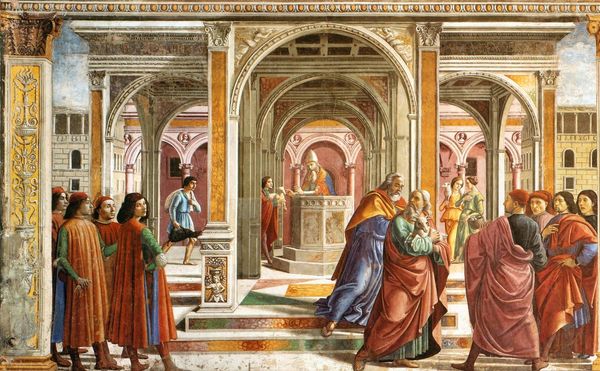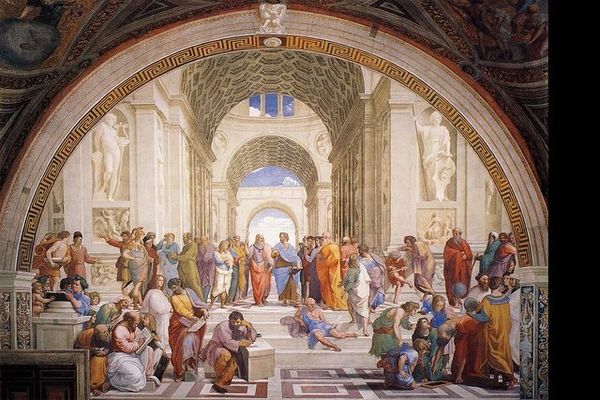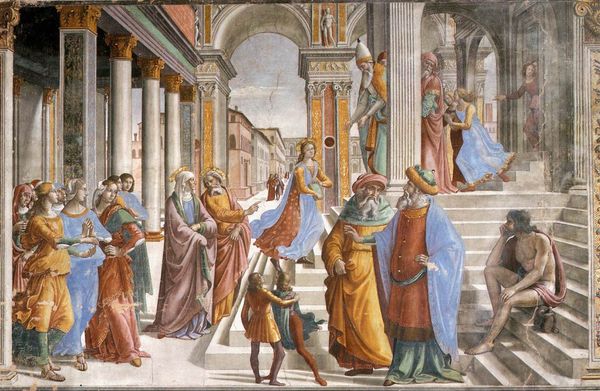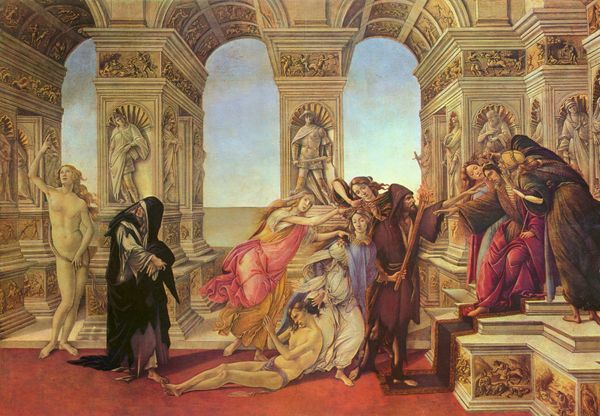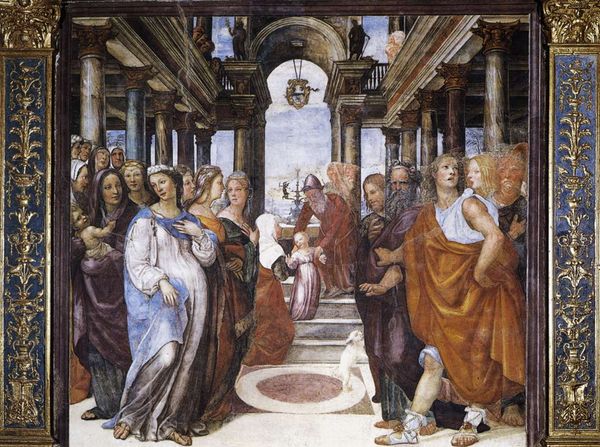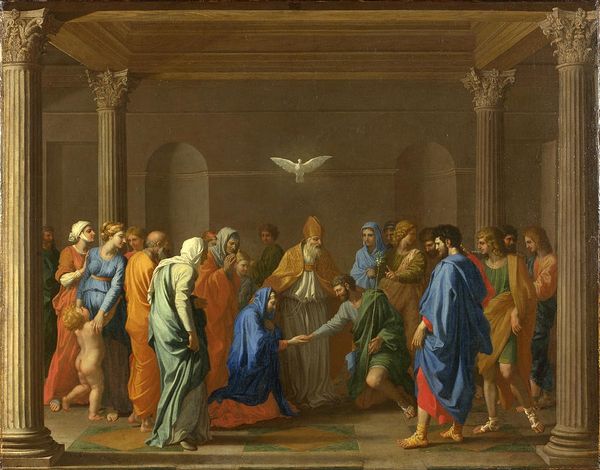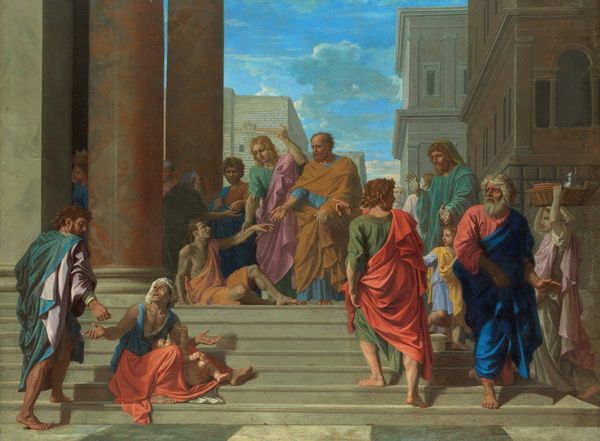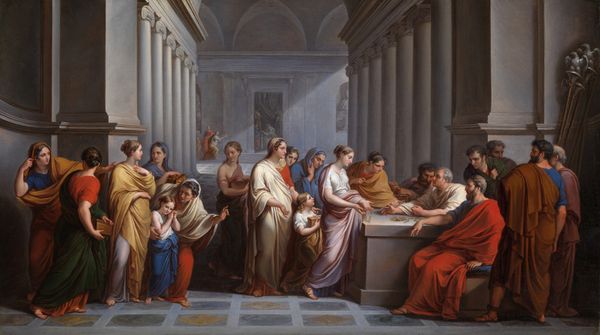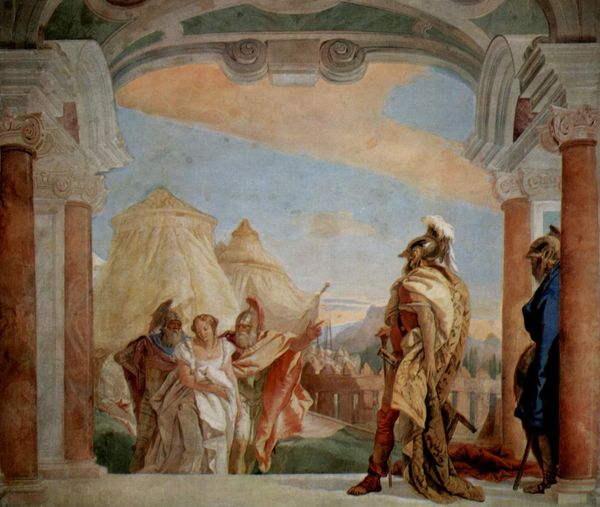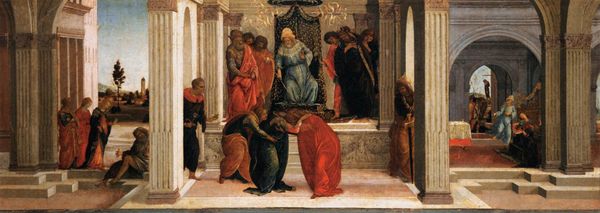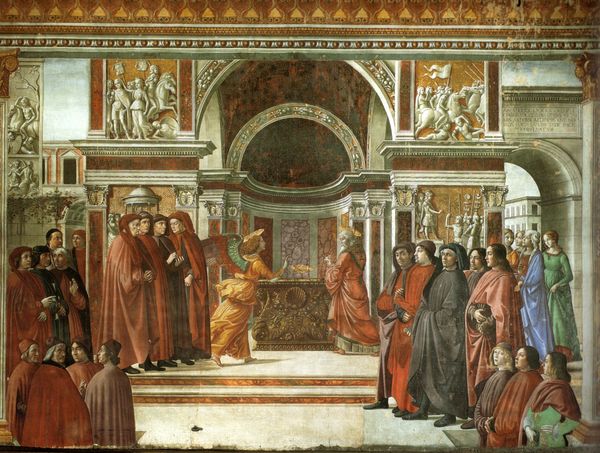
Zacharias Writes Down the Name of His Son 1490
0:00
0:00
domenicoghirlandaio
Santa Maria Novella, Florence, Italy
fresco
#
portrait
#
figuration
#
fresco
#
oil painting
#
christianity
#
genre-painting
#
history-painting
#
italian-renaissance
Copyright: Public domain
Curator: Domenico Ghirlandaio’s fresco, “Zacharias Writes Down the Name of His Son,” created around 1490, is part of the Tornabuoni Chapel cycle in Santa Maria Novella, Florence. It captures the moment Zacharias, initially struck dumb for his disbelief, confirms the name of his son, John the Baptist. Editor: The color palette gives me a very specific Renaissance mood – light, airy, and hopeful, almost optimistic in its depiction of domesticity within a grand setting. But there's also something unsettling about the composition, everyone seems to be staring. Curator: The painting's setting in a grand architectural space speaks volumes, evoking the classical world being reborn during the Renaissance. But let's focus on Zacharias: he’s central, regaining his voice, writing "John," asserting the divinely appointed name. This act solidifies faith and prophecy. The composition also serves a symbolic role: each figure signifies an aspect of divine will being manifest, a return of sacred order and truth. Editor: And what order, though! It strikes me as patriarchal order reaffirmed. Zacharias' regaining his voice is inextricably linked to asserting his control and naming his son in defiance of what others believe. It mirrors, in miniature, larger social structures—who gets to speak, who is silenced, and how power is passed down. Even the seemingly mundane act of naming becomes a potent symbol. Curator: Indeed. Naming holds immense symbolic weight. Names carry identity, destiny, and a lineage. His miraculous restoration mirrors the dawn of a new era. Editor: Considering it as genre-painting and Christian scene intersecting in 15th-century Florence highlights societal anxieties around lineage and male inheritance. The surrounding figures feel posed, almost theatrical. Their garments speak of status, reinforcing class structures. Who gets depicted, what they wear, how they stand—every detail serves a broader social narrative of power and place. Curator: Quite so. These garments echo wealth and position within Florence. It becomes a record of sorts, encoding socio-economic realities of the time through dress and decorum. Through art, cultural memory endures, continually echoing and reshaping itself, impacting how we understand historical moments in connection with ourselves and in connection with those that were, even across vast expanses of time and culture. Editor: I now appreciate the deliberate contrast between the holy narrative and the socio-political realities that suffuse it, challenging us to confront these dual realities and asking essential questions about power, visibility, and the weight of inherited legacies. Curator: Precisely. The image lingers, posing essential queries about power, history, and enduring symbolic meaning through changing cultures, echoing forward for centuries and challenging our perspective today.
Comments
No comments
Be the first to comment and join the conversation on the ultimate creative platform.
